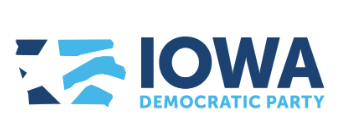The state of Nebraska just provided a case study for how caucuses exclude more people than primaries.
The Nebraska caucuses had an absentee ballot option to allow more people to participate. Organizers for Hillary Clinton and Bernie Sanders worked the state for weeks, because the caucus was set for March 5, when neither candidate had a clear lead in the quest for the Democratic nomination. Even so, fewer than 34,000 Democrats participated in the event that determined the allocation of Nebraska’s pledged delegates. Sanders won the caucuses with about 57 percent of the voters. The Clinton campaign’s successful absentee ballot drive prevented the senator from winning by the kind of margin he was able to run up in many other caucus states.
Today’s primary in Nebraska was “non-binding,” and because it would not influence the pledged delegate count, neither Democratic presidential campaign put much effort into GOTV. Nevertheless, nearly 45,000 Nebraska Democrats cast ballots. Clinton received nearly 57 percent of the votes. UPDATE: make that 78,543 participants in the meaningless Democratic primary, with Clinton receiving a little more than 53 percent of the votes. These maps show dramatically different results for Clinton and Sanders in the same state, two months apart.
If Clinton becomes the next president–and I like her chances against Donald Trump–her allies on the Democratic National Committee will likely push to ban caucuses for the purposes of presidential selection. Primaries tend to generate higher turnout, since voters have all day to cast ballots, and sometimes an early voting period too. By requiring people to be in a specific place at a particular time for an hour or more, caucuses exclude many shift workers, caregivers, and people who are housebound.
The Iowa Democratic Party’s Caucus Review Committee needs to go beyond token improvements to how volunteers run their precincts and consider absentee ballots or other ways to make our caucuses more inclusive. Satellite caucuses that attract a few hundred people statewide and more efficient sign-in methods to reduce caucus-night lines are not going to cut it.

